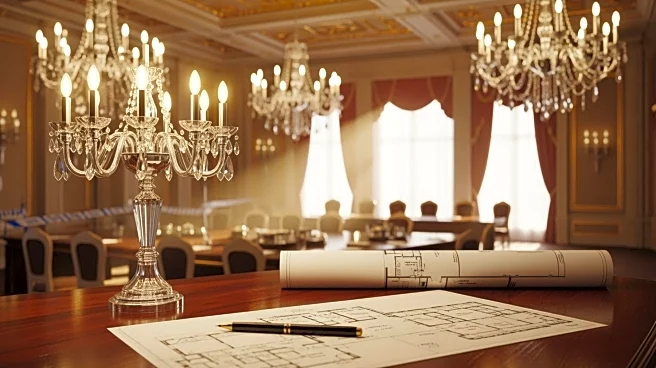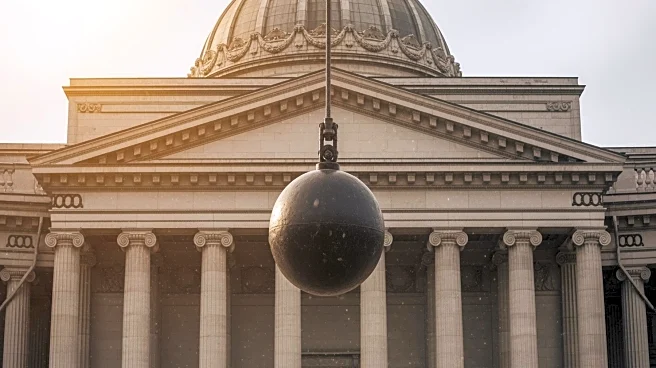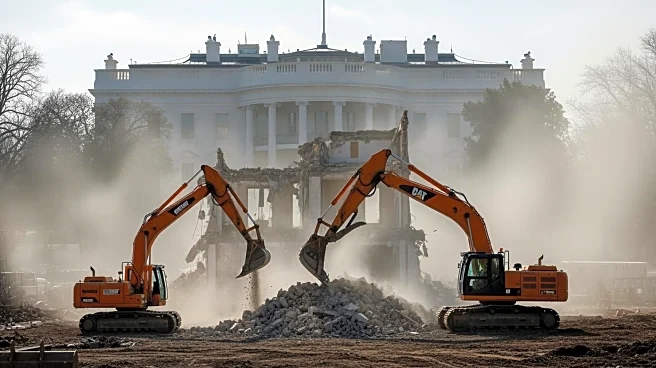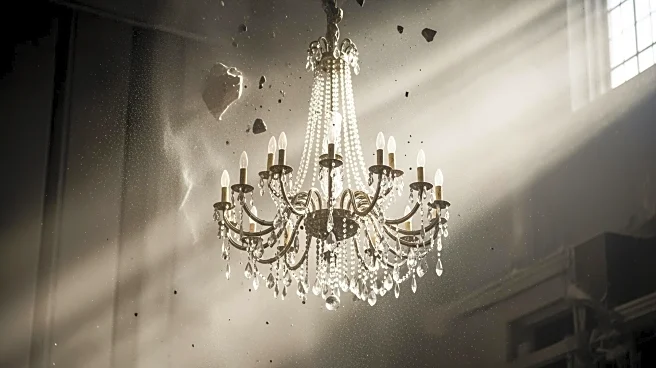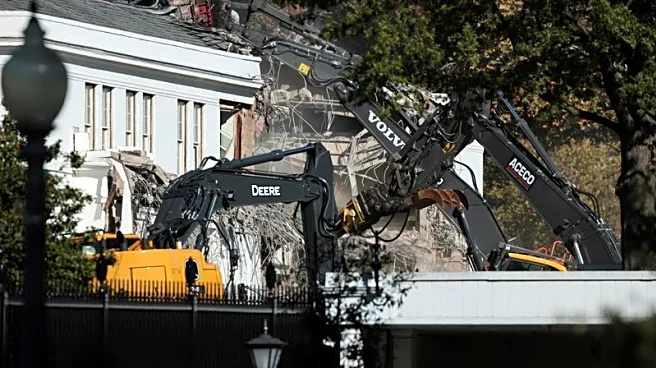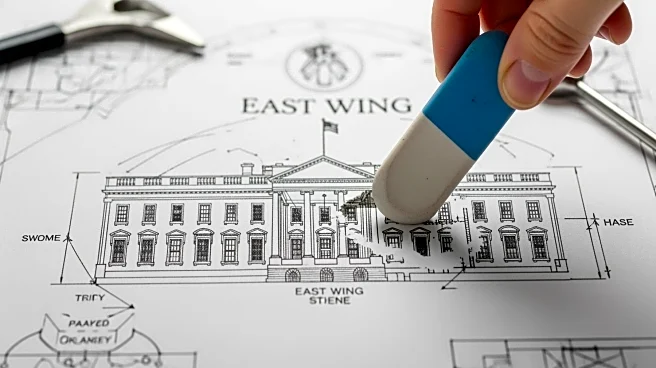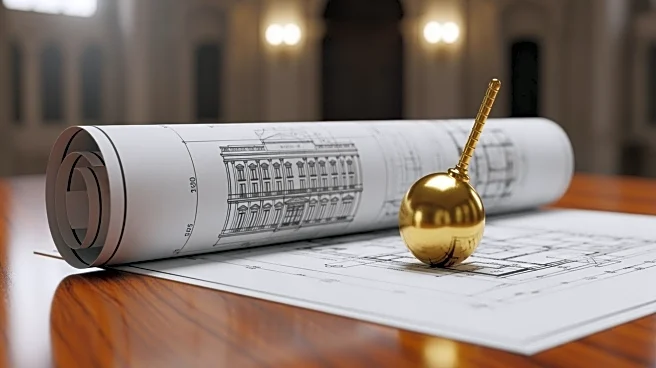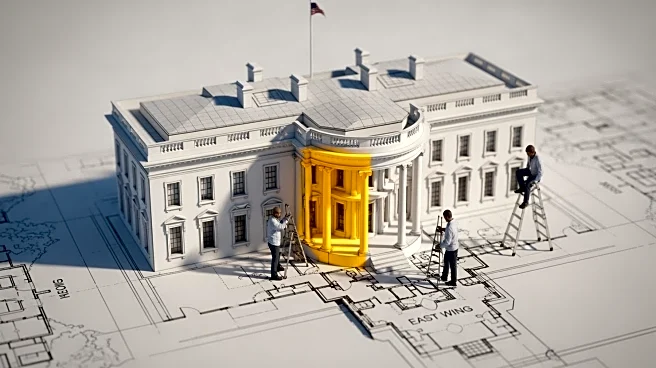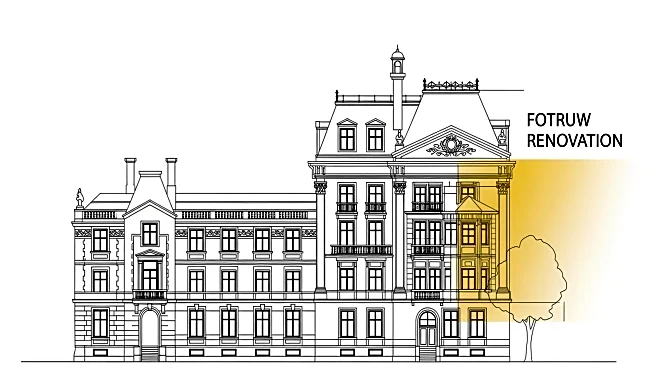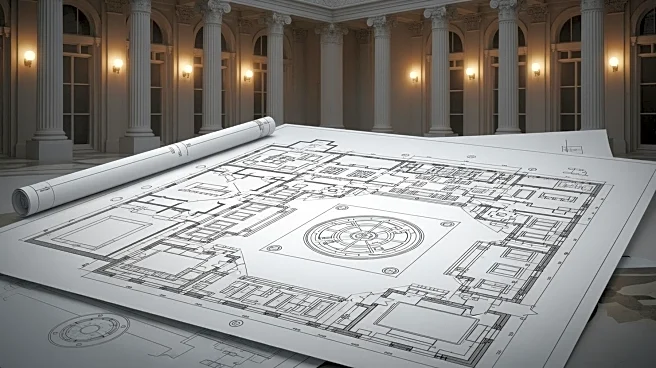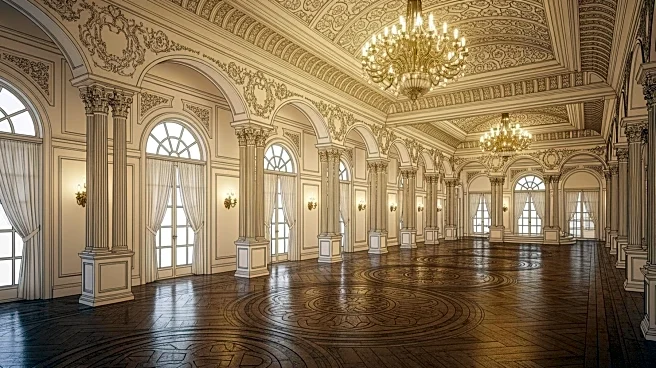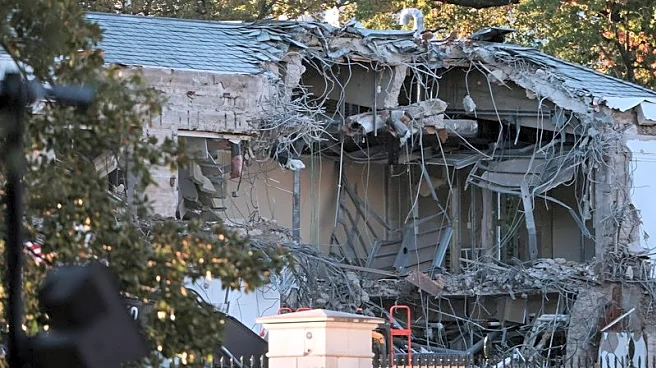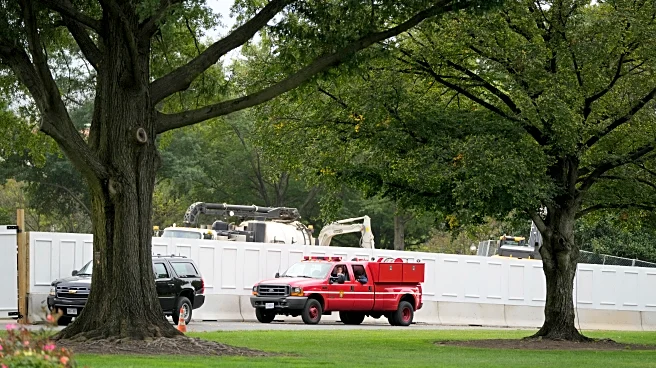What's Happening?
President Donald Trump has commenced construction on a $250 million ballroom at the White House, marking a significant addition to the historic building. The ballroom, which will be located in the East Wing, is set to be a 90,000-square-foot space capable
of accommodating 999 guests, nearly double the size of the main White House. The construction involves tearing down part of the East Wing facade, despite initial assurances that no demolition would occur. The project is funded through private donations, including a $22 million contribution from YouTube as part of a settlement from a lawsuit. The ballroom is designed to provide a large entertaining space, addressing Trump's dissatisfaction with the current largest space, the East Room, which holds about 200 people.
Why It's Important?
The addition of a ballroom to the White House represents a significant shift in how presidential events may be hosted, potentially reducing the need for temporary structures like tents for large gatherings. This development could influence future administrations' approaches to hosting state dinners and other large events. The funding model, relying on private donations, raises questions about transparency and the influence of donors on presidential projects. The construction also highlights President Trump's ongoing efforts to leave a lasting architectural legacy at the White House, following previous renovations such as the Rose Garden transformation and Oval Office redecorations.
What's Next?
The ballroom is expected to be completed before the end of President Trump's second term in January 2029. As construction progresses, the White House may face scrutiny over the lack of approval from the National Capital Planning Commission, which typically oversees major renovations to government buildings. The project could prompt discussions about the balance between preserving historical integrity and modernizing the White House. Stakeholders, including political leaders and historians, may weigh in on the implications of such a large-scale addition to the iconic residence.
Beyond the Headlines
The construction of the ballroom may have deeper implications for the cultural and historical significance of the White House. It raises questions about the evolving role of the presidential residence in American society and how changes to its structure reflect broader shifts in political and social norms. The project could also spark debates about the ethical considerations of using private funds for public buildings and the potential influence of corporate donors on government decisions.
